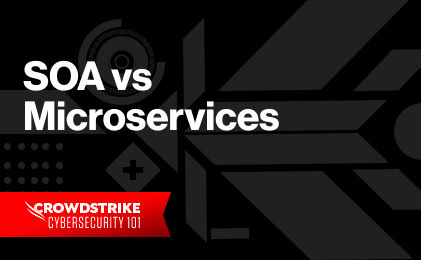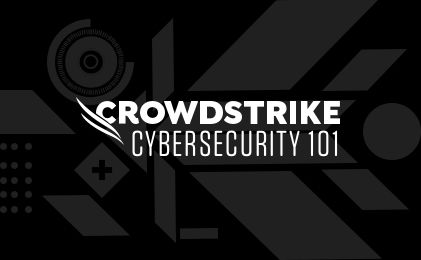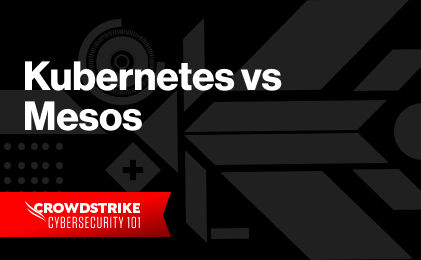What is microservices security?
The microservices architecture—which divides applications into small, independent, loosely coupled services—has revolutionized modern software. Microservices are foundational to cloud computing and container technologies. They offer tremendous flexibility, scalability, and efficiency. However, the distributed nature of microservice-based applications introduces unique and serious security challenges. In this article, we’ll look at these security challenges that microservices introduce, along with the key approaches and tools used to address them.
Understanding the security challenges of microservices
When your software application is a monolith, it runs a single service that manages requests for all the application's features. In contrast, a microservices architecture typically separates each feature into an individual service. Although this loosely coupled approach offers numerous advantages, it also expands the system's attack surface, thereby increasing its overall vulnerability.
The decentralized nature of microservices means that each individual service must have an implementation of basic security measures. These include:
- Authentication
- Authorization
- Vulnerability scanning
- Data encryption
Maintaining high security levels for a single monolith, no matter how large, is generally simpler than managing the security for dozens (sometimes even hundreds) of smaller microservices.
One key advantage of a microservices approach is the ability to deploy each service individually and rapidly, even multiple times per day, without disrupting other services. If one microservice is experiencing an issue in production, the rest of the application can remain mostly unaffected.
Rolling back a problematic update in a single microservice is also much faster, often with minimal impact on the overall system. However, this rapid pace can also significantly increase the complexity of security patching and proper testing.
Core principles for securing microservices
Securing a microservices architecture requires implementing measures at various layers of your tech stack.
API security
Granted, not every service in a microservice environment is necessarily an API. However, the request-response mechanism based on APIs is a very common pattern in these environments. Crucial components of API security include:
- Securing service communication: If an API isn’t meant to be publicly accessible, implement a firewall that restricts unauthorized services from accessing it.
- Authentication and authorization: Unless the data provided by an API is intended to be publicly accessible, an API server should implement authentication and authorization. This ensures that access is restricted to only the resources and operations the client is permitted to use.
- Input validation: Malicious actors may attempt to exploit vulnerabilities by sending malformed inputs via HTTP headers, query, or path parameters. Therefore, API servers should perform input validation before executing business logic.
- Rate limiting: A common attack against APIs is the automated flooding of requests to an API, either as a brute force password-guessing attack or as a denial-of-service (DoS) attack. To prevent a server outage, enforce request rate limiting on your API servers.
Zero trust principles
Services must implement strict access control, based on a zero trust methodology. This means implementing technologies, such as firewalls and authentication tokens, to allow communication between services and clients only when necessary. Enforce the principle of least privilege for both services and users.
Protecting data in transit
Data flowing over the internet can be intercepted by malicious actors. This is why data encryption in transit has become a necessity. Encryption protocols such as HTTPS, which are based on Secure Sockets Layer (SSL) and Transport Layer Security (TLS) encryption standards, guarantee that all data between servers and clients is encrypted in transit. Thus, even if it is intercepted, attackers are not able to decipher it.
Because these encryption protocols use security certificates to generate keys, these certificates must be properly stored, managed, and regularly updated to remain effective.
Continuous monitoring and logging
Without the real-time capturing and monitoring of logs and events, organizations are blind to potential threats to their systems. As each microservice generates its own log stream, it is crucial to use a centralized logging tool that aggregates the logs from all the microservices in an application. This central location serves as a single source of truth, enabling engineers to easily query and correlate data from across all components.
Integrating real-time alerting with log and metric analysis enables security engineers to respond to incidents swiftly.
Implementing security in a CI/CD pipeline
Services should not be released to production without proper security vetting. Integrating automated security checks and tests into the CI/CD pipeline ensures services meet security standards before production. Additional security practices, such as vulnerability scanning and static code analysis, should be integrated into the CI/CD pipeline.
Handling security at scale with containerization
Microservices usually run in containers that are managed by container orchestration tools, such as Kubernetes or Docker Swarm. Therefore, container security is a crucial segment of microservice security, with its own set of best practices:
- Image scanning: Analyzing images for vulnerabilities, misconfigurations, and regulatory compliance before they are pushed to a container registry.
- Runtime security: Includes monitoring the container runtimes that execute the services within those containers, to identify and detect potential anomalies.
- Securing the container registry: Limiting access to images stored in a registry by enforcing strict access policies and IAM roles. Only fully authenticated orchestration tools and services should be able to pull an image from a registry.

The Complete Guide to CNAPPs
Download CrowdStrike's Complete Guide to CNAPPs to understand why Cloud-Native Application Protection Platforms are a critical component of modern cloud security strategies and how to best integrate them to development lifecycles.
Download NowA trusted path to secure microservices
The many advantages of a microservices architecture have made this approach exceptionally attractive for tech organizations of all sizes. However, organizations must not ignore the security challenges that come with adopting microservices.
Microservice security is an ever-evolving process in which modern microservice security tools play a critical role. CrowdStrike Falcon® Cloud Security provides deep visibility into your microservices while enforcing security standards based on zero trust principles. Through a partnership with Salt Security, CrowdStrike Falcon also provides seamless integration of all aspects of API security. Falcon’s AI-native features ensure comprehensive protection in each layer of your microservice environment.








